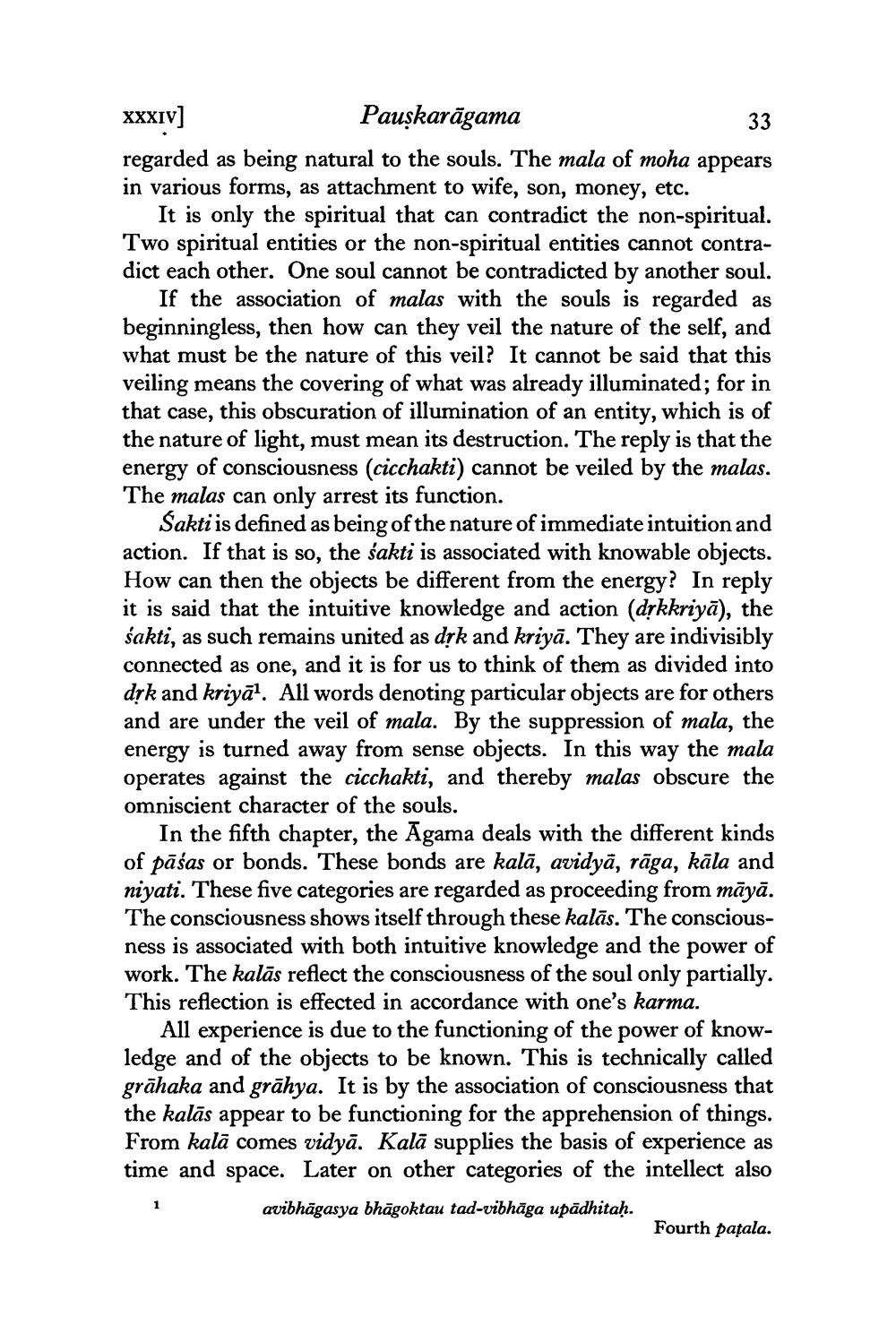________________
33
XXXIV]
Pauşkarāgama regarded as being natural to the souls. The mala of moha appears in various forms, as attachment to wife, son, money, etc.
It is only the spiritual that can contradict the non-spiritual. Two spiritual entities or the non-spiritual entities cannot contradict each other. One soul cannot be contradicted by another soul.
If the association of malas with the souls is regarded as beginningless, then how can they veil the nature of the self, and what must be the nature of this veil? It cannot be said that this veiling means the covering of what was already illuminated; for in that case, this obscuration of illumination of an entity, which is of the nature of light, must mean its destruction. The reply is that the energy of consciousness (cicchakti) cannot be veiled by the malas. The malas can only arrest its function.
Sakti is defined as being of the nature of immediate intuition and action. If that is so, the sakti is associated with knowable objects. How can then the objects be different from the energy? In reply it is said that the intuitive knowledge and action (drkkriyā), the śakti, as such remains united as drk and kriyā. They are indivisibly connected as one, and it is for us to think of them as divided into drk and kriyāl. All words denoting particular objects are for others and are under the veil of mala. By the suppression of mala, the energy is turned away from sense objects. In this way the mala operates against the cicchakti, and thereby malas obscure the omniscient character of the souls.
In the fifth chapter, the Agama deals with the different kinds of pāśas or bonds. These bonds are kalā, avidyā, rāga, kāla and niyati. These five categories are regarded as proceeding from māyā. The consciousness shows itself through these kalās. The consciousness is associated with both intuitive knowledge and the power of work. The kalās reflect the consciousness of the soul only partially. This reflection is effected in accordance with one's karma.
All experience is due to the functioning of the power of knowledge and of the objects to be known. This is technically called grāhaka and grāhya. It is by the association of consciousness that the kalās appear to be functioning for the apprehension of things. From kalā comes vidyā. Kalā supplies the basis of experience as time and space. Later on other categories of the intellect also avibhāgasya bhāgoktau tad-vibhāga upādhitaḥ.
Fourth patala.




